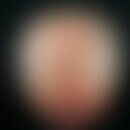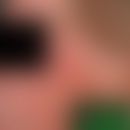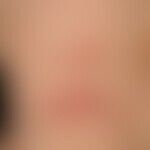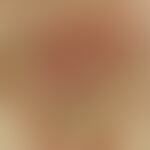Synonym(s)
HistoryThis section has been translated automatically.
Cazenave, 1844
DefinitionThis section has been translated automatically.
(Minus-) variant of pemphigus vulgaris with high intraepidermal (subcorneal) continuity separation and thus very thin, volatile, easily tearing blister cover. In contrast to pemphigus vulgaris, there are always no mucous membrane changes in pemphigus foliaceus.
You might also be interested in
ClassificationThis section has been translated automatically.
A distinction is made between:
- Pemphigus erythematosus (Senear-Usher syndrome)
- Pemphigus foliaceus, Brazilian (endemic type/Fogo selvagem)
- Pemphigus herpetiformis (rarely P. vulgaris).
Occurrence/EpidemiologyThis section has been translated automatically.
Incidence: 0.5-1/1 million inhabitants/year.
EtiopathogenesisThis section has been translated automatically.
Autoimmune disease with formation of autoantibodies against desmoglein 1. non-specific factors such as stress or sunlight have a provocative effect
ManifestationThis section has been translated automatically.
Mainly occurring between the ages of 30 and 60 (rarely possible in children).
LocalizationThis section has been translated automatically.
Capillitium
Seborrheic zones of the face and trunk (anterior and posterior sweat groove). No mucous membrane infestation!
Clinical featuresThis section has been translated automatically.
As the blister cover is very thin due to the superficial location, intact blisters are rarely found in the patient. Rather, it is the sequelae of the burst blisters that are impressive. The disease begins with the crusts described above on the face and neck, then spreads over the body (particularly in the area of the front and rear sweat grooves (seborrheic zones) towards the hands and feet. The hairy head is usually also affected. There are flat red papules and plaques with flaky scaly crusts, hyperkeratotic scales, weeping, sticky, moist erosions and unpleasant foetor due to bacterial decomposition. Rarely, vesicles or pustules may be observed at the edges of the plaques. A sudden exacerbation with spread to erythroderma is possible (change of the typically localized disease to the generalized stage of pemphigus vulgaris).
The Nikolski phenomenon I is positive.
In contrast to vulgar pemphigus and paraneoplastic pemphigus, the oral mucosa remains free (explanation: only desmoglein-1-AK; desmoglein-1 is not expressed by mucosal epithelia).
Alopecia and painful paronychia are common.
LaboratoryThis section has been translated automatically.
Pemphigus antibodies (desmoglein-1-AK) are not always detectable.
HistologyThis section has been translated automatically.
Acantholytic blister formation in the upper stratum spinosum or stratum granulosum. Acanthosis, papillomatosis, hyperkeratosis or dyskeratotic changes are also present.
Remark: Regarding the special features of the biopsy technique see below. pemphigus vulgaris
Indirect immunofluorescenceThis section has been translated automatically.
Pemphigus antibodies not always detectable.
Differential diagnosisThis section has been translated automatically.
Complication(s)This section has been translated automatically.
External therapyThis section has been translated automatically.
Internal therapyThis section has been translated automatically.
In case of extensive infestation, immunosuppressive therapy with glucocorticoids such as prednisolone (e.g. Decortin® H) initially 1.0-2.0 mg/kg bw/day p.o. in combination with
Rituximab (MabThera®, anti-CD20 AK, dosage: 375 mg/m2 KO on day 1 and 14(-21) i.v. Time to response of therapy approx. 7 weeks. Possibly repeat the therapy regime after 1 year),
or azathioprine (e.g. Imurek®, 1.0-1.5 mg/kg bw/day p.o.).
Reduction of glucocorticoids to 2.5-10 mg/day according to clinical symptoms (in long-term therapy, low doses of glucocorticoids are administered together with immunosuppressants).
Progression/forecastThis section has been translated automatically.
LiteratureThis section has been translated automatically.
- Abreu Velez AM et al (2003) Detection of mercury and other undetermined materials in skin biopsies of endemic pemphigus foliaceus. Am J Dermatopathol 25: 384-391
- Abreu-Velez AM (2003) Analyses of autoantigens in a new form of endemic pemphigus foliaceus in Colombia. J Am Acad Dermatol 49: 609-614
- Cazenave PL (1844) Pemphigus chronique, générale; forme rare de pemphigus foliacé; mort: autopsie; alteration du foie. Les Annales des maladies de la peau et de la syphilis. 18: 583-585
- Cummins DL et al (2003) Oral cyclophosphamide for treatment of pemphigus vulgaris and foliaceus. J Am Acad Dermatol 49: 276-280
- Eming, R et al.(2015) S2k guidelines for the treatment of pemphigus vulgaris/foliaceus and bullous pemphigoid. JDDG 13: 833-844.
- Hirsch R et al (2003) Neonatal pemphigus foliaceus. J Am Acad Dermatol 49: S187-189.
- Jarzabek-Chorzelska M et al (2002) Immunopathological diagnosis of pemphigus foliaceus. Dermatology 205: 413-415
- Luther H, Kastner U, Altmeyer P (1999) Comment on the contribution by Alexander H. Enk and Jurgen Knop. "Adjuvant therapy of pemphigus vulgaris and pemphigus foliaceus with intravenous immunoglobulins". Dermatologist 50: 372-374
- Schmidt E et al (2000) Pemphigus. Loss of desmosomal cell-cell contact. Dermatologist 51: 309-318
- Schmidt E et al (2015) S2k guideline on the diagnosis of pemphigus vulgaris/foliaceus and bullous pemphigoid. JDDG 13: 713-726
- Whittock NV et al (2003) Targeting of desmoglein 1 in inherited and acquired skin diseases. Clin Exp Dermatol 28: 410-415
Incoming links (14)
Autoimmune dermatoses, bullous; Candesartan; Cazenave's disease; DSG1 Gene; IgA Pemphigus ; Methotrexate; Nikolsky, pyotr vasilievich; Pemphigus drug-induced; Pemphigus erythematosus; Pemphigus foliaceus, brazilian; ... Show allOutgoing links (24)
Acanthosis; Acute paronychia; Alopecia (overview); Autoantibodies; Azathioprine; Desmogleine; Erythrodermia; Glucocorticosteroids; Light stabilizers; Lupus erythematosus (overview); ... Show allDisclaimer
Please ask your physician for a reliable diagnosis. This website is only meant as a reference.












